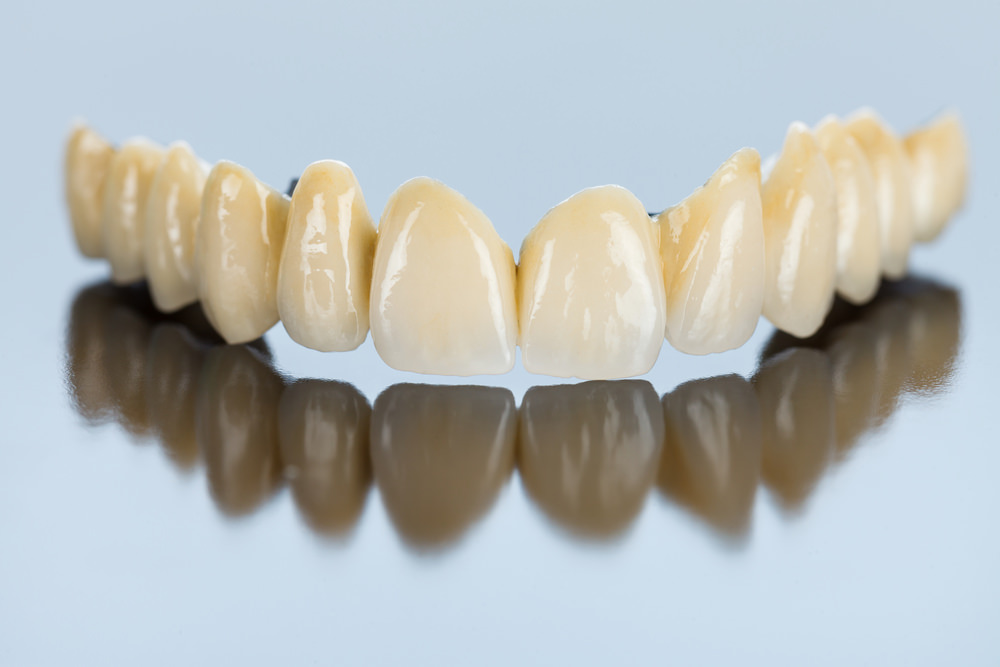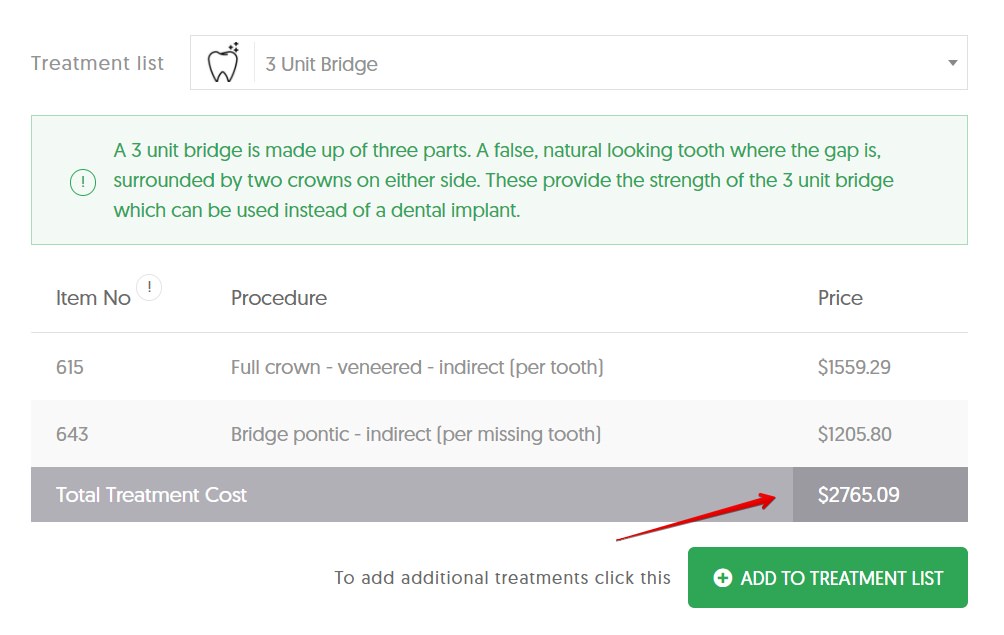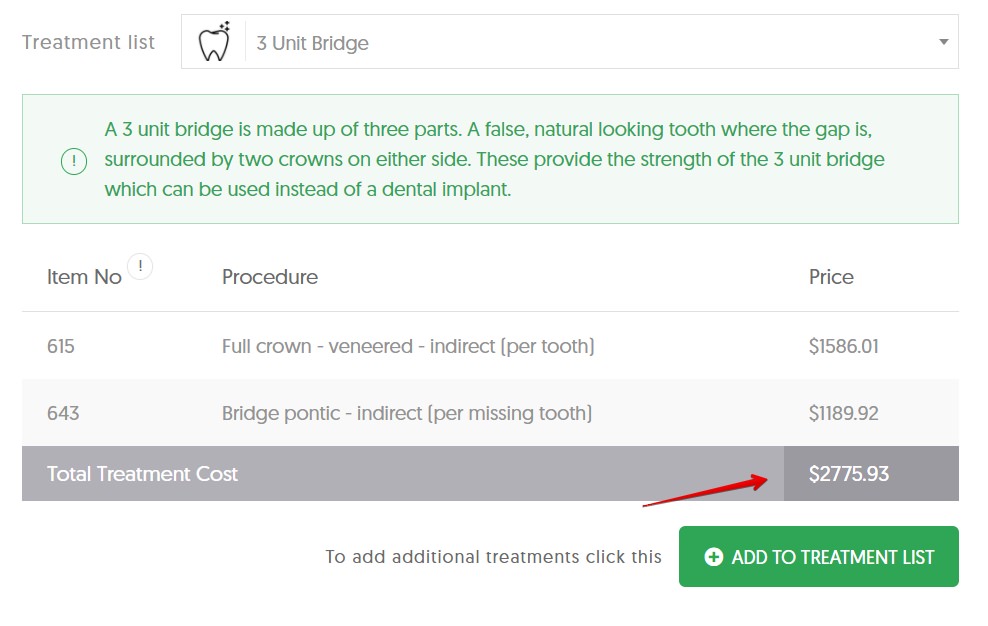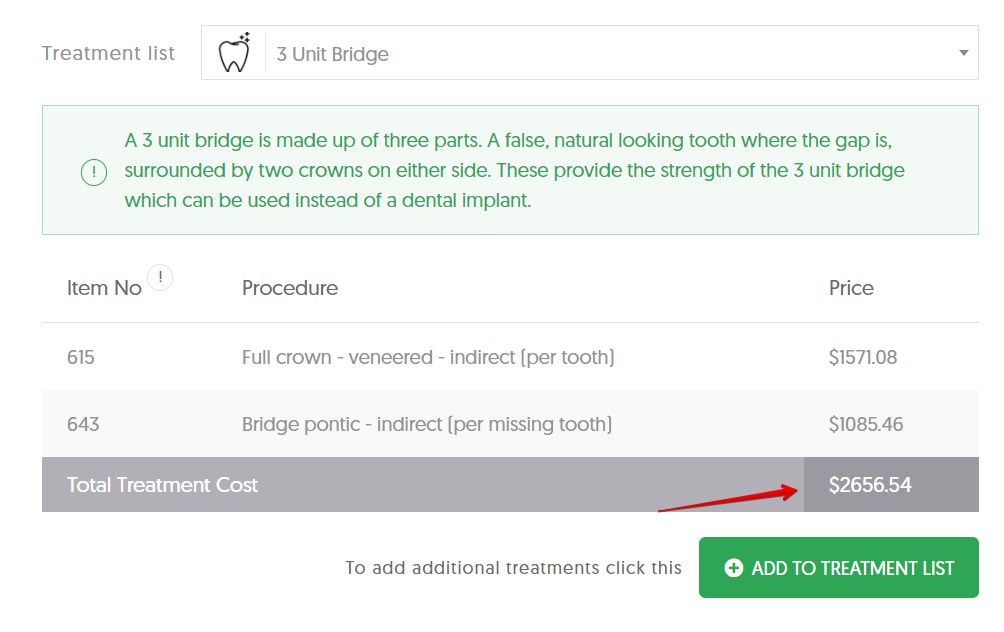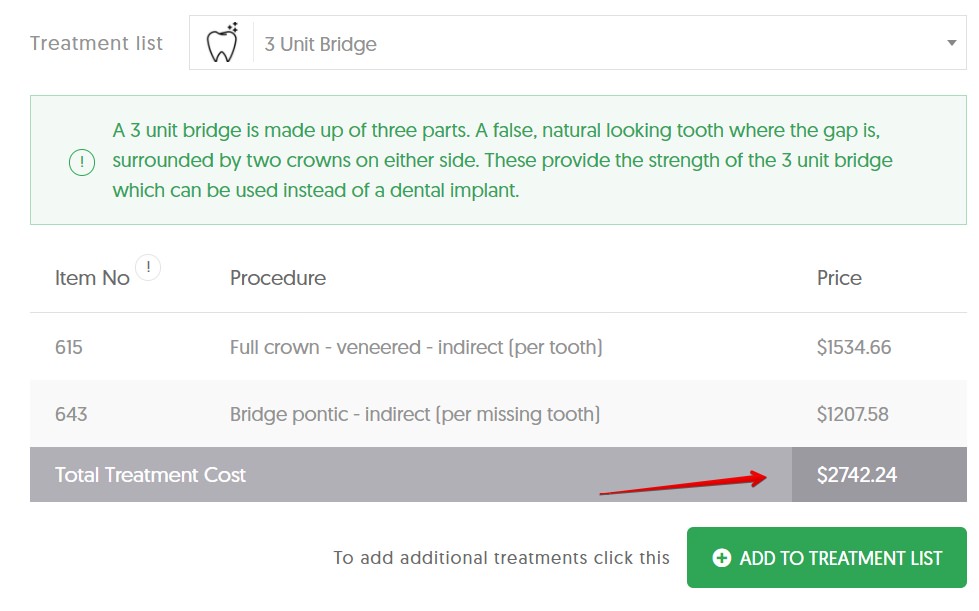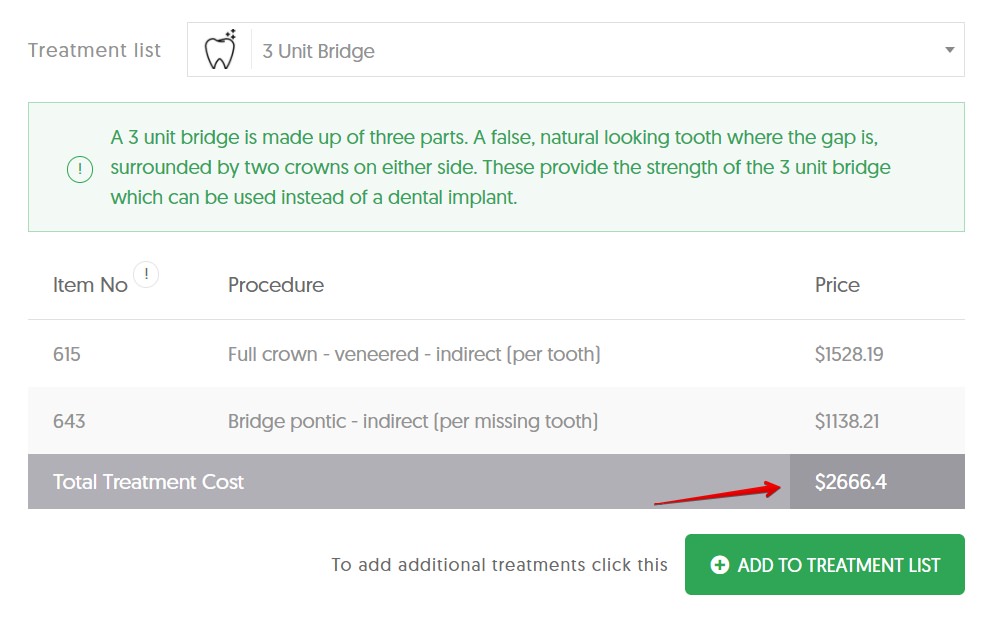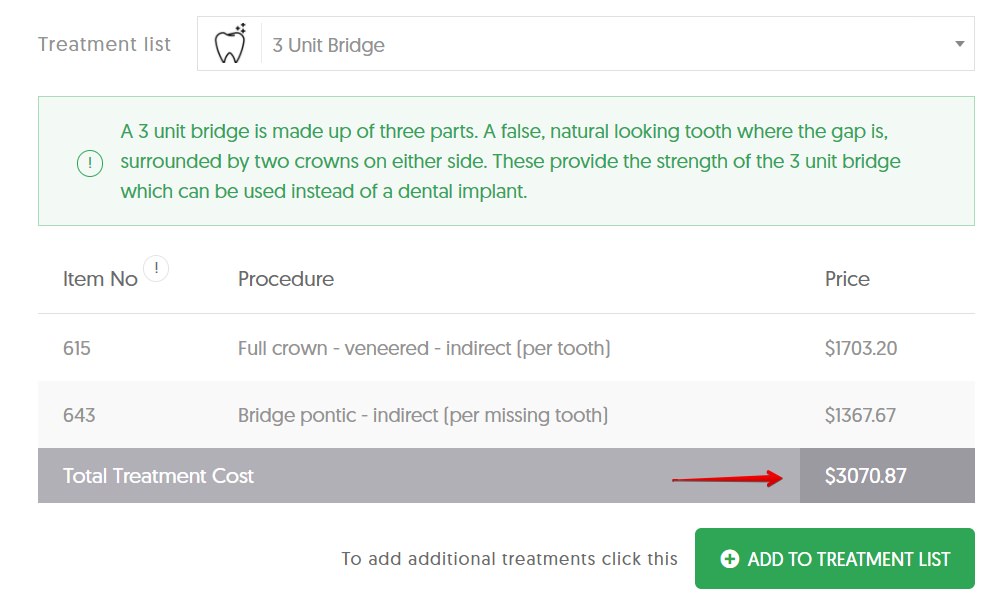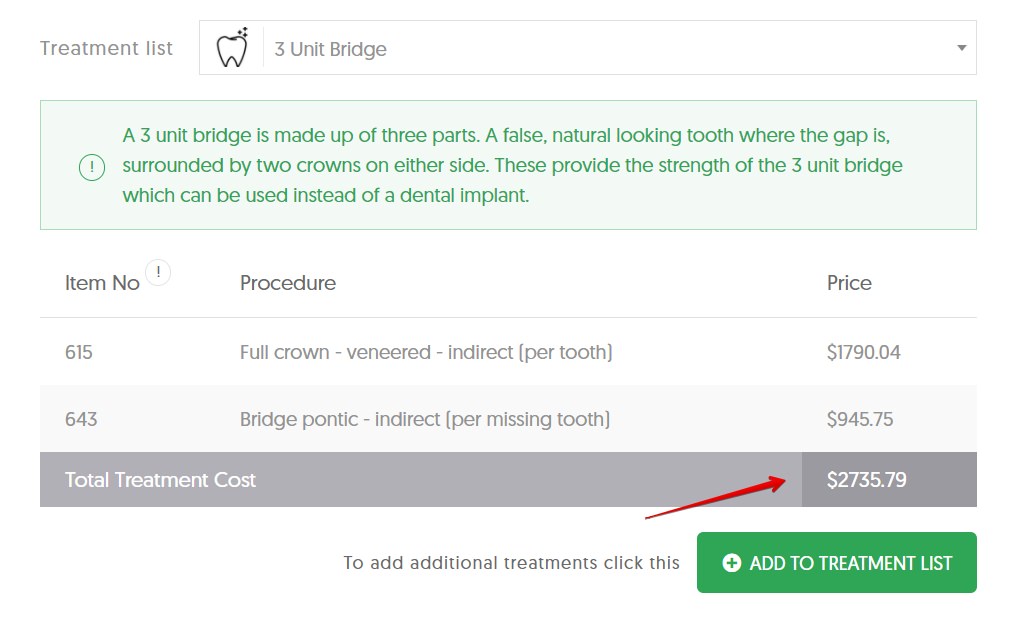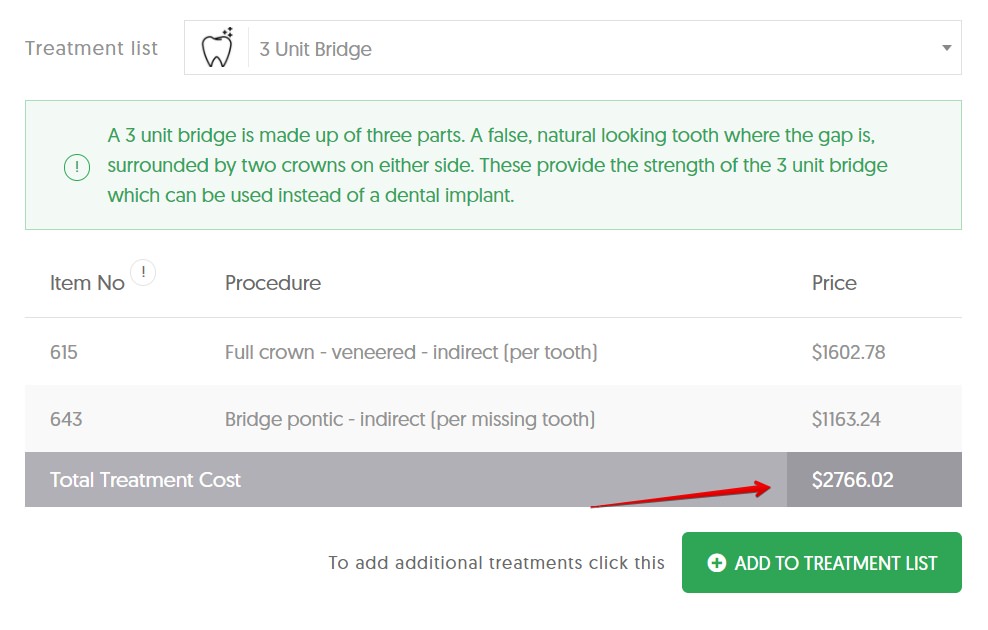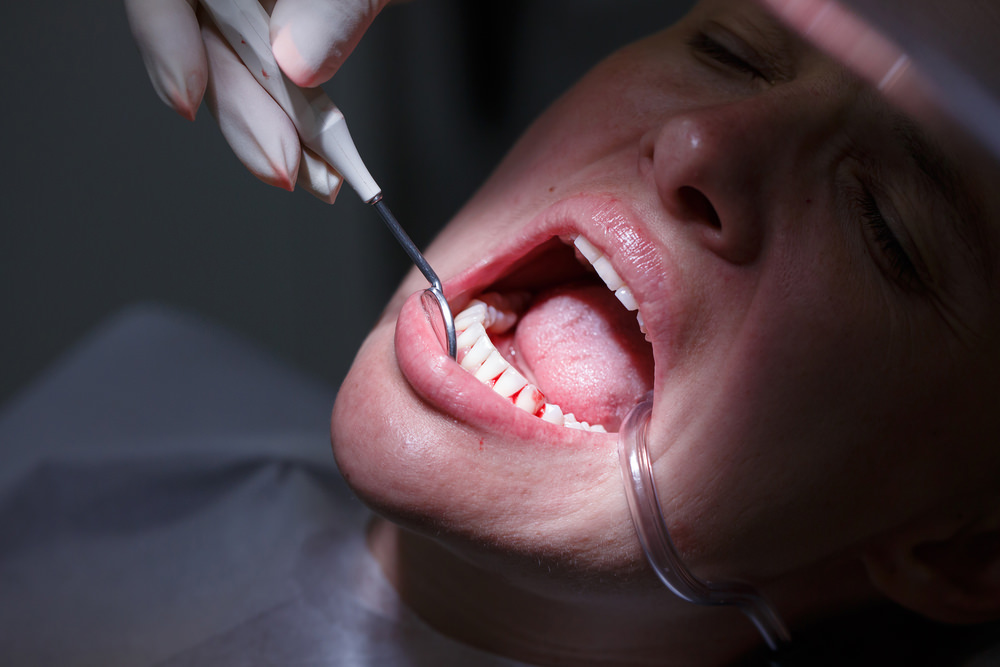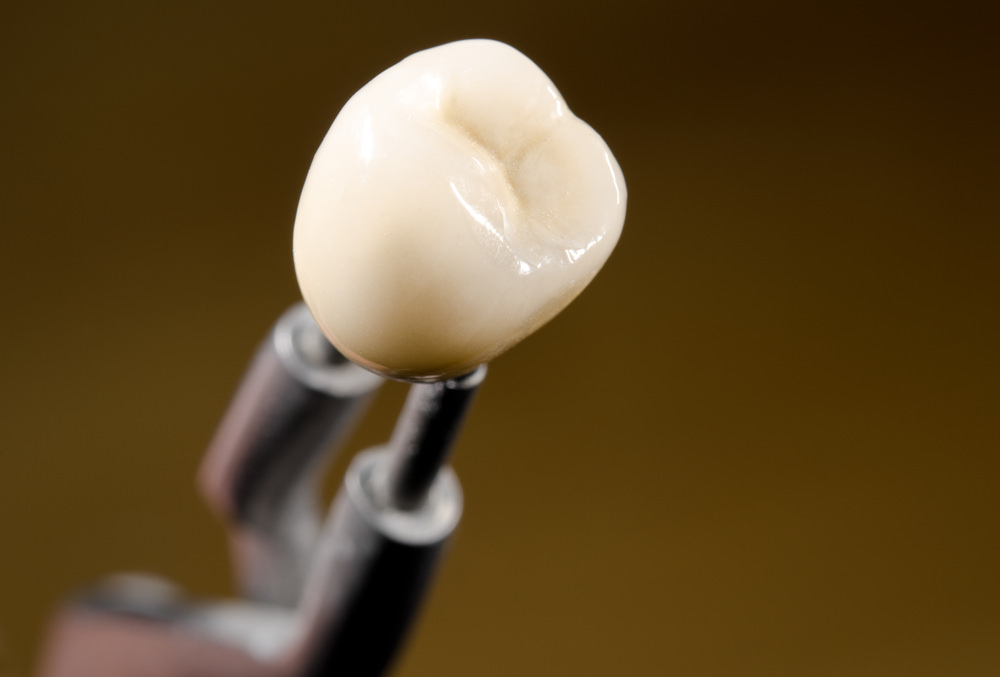Dental Bridge Costs – Don’t Overpay Again
Unfortunately, there are times in life when you may lose one tooth or more.
When this happens, your dentist may recommend that you need a dental bridge.
So, how much does a dental bridge cost?
The price of a dental bridge depends on many factors, including;
- The position in the mouth the bridge must be fitted.
- How many teeth the bridge needs to fill in, and
- Where you live.
However, you can expect to pay somewhere between $945 to $1367 per tooth for a dental bridge.
In this post, I’ll go over the following;
- Dental Bridge Cost vs. Implant
- How to Lower Dental Costs for Bridges
- Dental Bridge Costs for Each State
- New South Wales Bridge Costs
- Victoria Bridge Costs
- Western Australia Bridge Costs
- South Australia Bridge Costs
- Tasmania Bridge Costs
- Australian Capital Territory Bridge Costs
- Northern Territory Bridge Costs
- What Are the Alternatives for a Bridge and Their Costs
- What are the Ongoing Maintenance Costs for Getting a Bridge
- Are There Different ‘Quality’ Bridges, and Do They Last the Same?
- Can You Get a Dental Bridge Overseas?
- What Are the Pitfalls to Look Out For
Note: All general dental information in his post has been referenced and confirmed by our resident Dentist, Dr V. As we don’t know your personal situation, it is advisable and recommended to seek direct advice and consultation with your dentist before deciding on a course of action.
Dental Bridge Cost vs. Implant
A dental bridge is called a ‘bridge’, as it bridges the gap between two existing, strong, healthy teeth.
It is okay if these teeth have quite large fillings – in fact, it is a good way of protecting these teeth, as the bridge will cover them, whilst closing the gap.
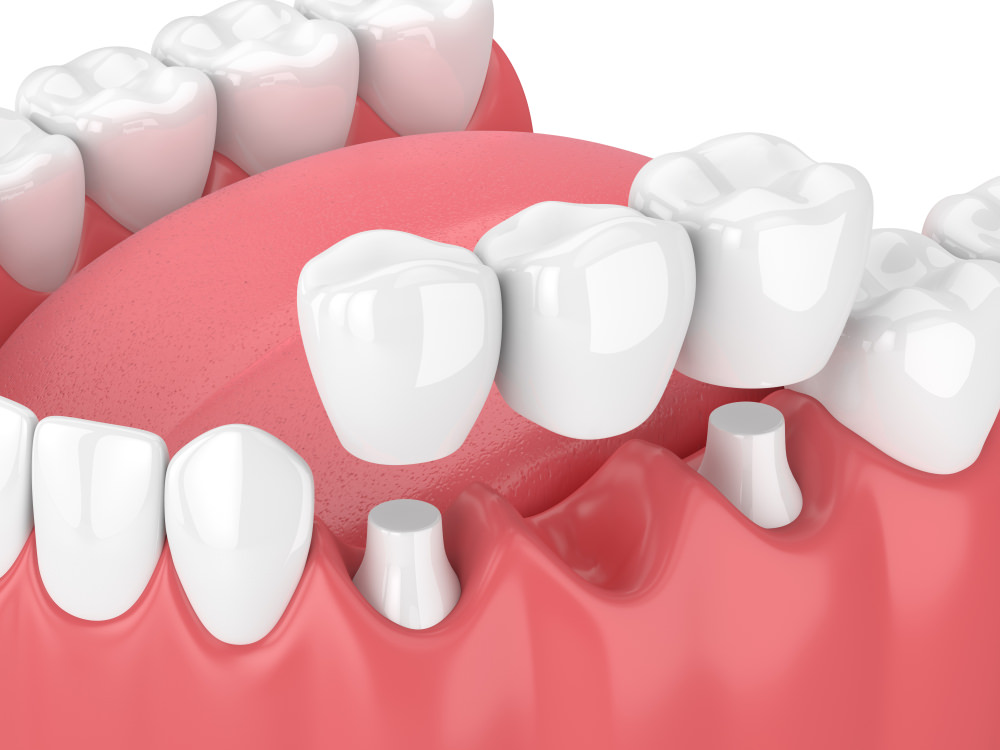
Here is a 3D illustration of a 3 unit dental bridge
Whereas, a dentist will most likely tell you to choose an implant over a bridge if the teeth on either side of the gap have not been filled or drilled.
These are called “virgin teeth” and the Dentist would have to cut them down, to the point where they look like stumps.
This means you are really breaking down what were really healthy teeth – and there is no point in doing this.
But a dental implant does not touch the healthy teeth on either side.
So there at times where, although more costly – up to $5000 per tooth – implants can be a smarter choice.
We have an article based on Dental Implants and the Solutions they Provide if you want to know more.
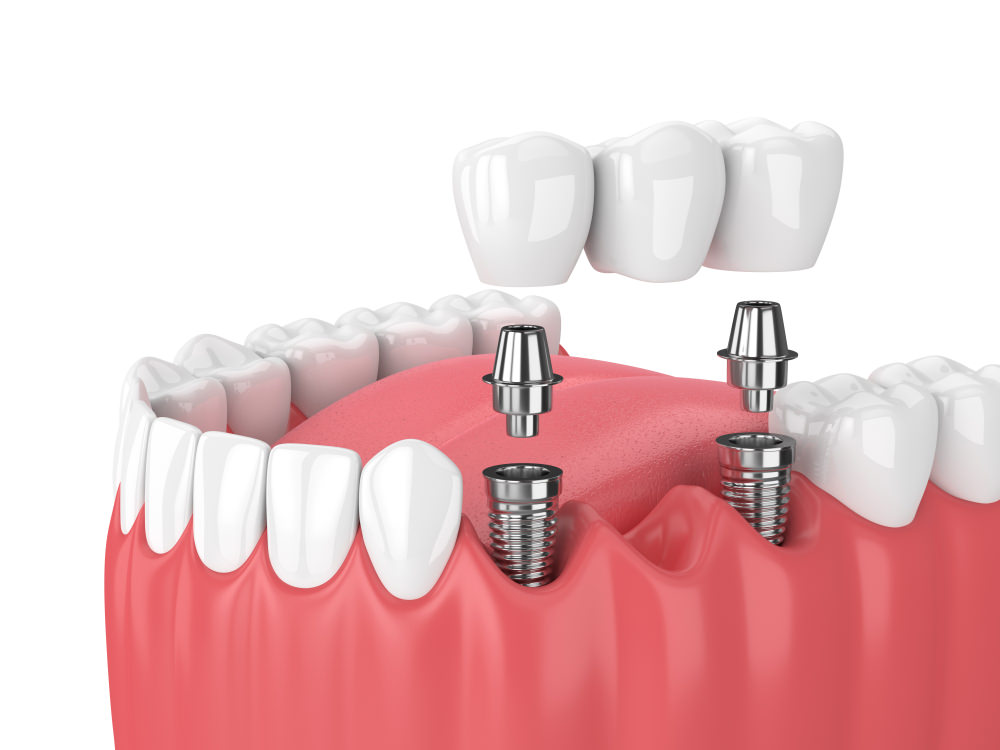
3D image of what a dental implant looks like
How to Lower Dental Cost for Bridges
By now, you may have noticed that bridges can cost a portion of the cost of some other cosmetic dental work.
However, you may not always have the funds at hand, so here are some ways you can lower the cost of the dental bridge.
- The type of material – An acrylic bridge (that is, a bridge made from plastic, just like dentures) will be a cheaper option.
- Consider a Dental Plan – These have no waiting periods, unlike many health insurance policies.
Otherwise, you could wait a while, using the time that is available to gather the money for the bridge.
For example, if you have a gap but need some time to save the funds, you can ask your Dentist to bond, like they would a false tooth.
Just be careful when biting if choosing bond or acrylic – there is a chance that you could knock it off, as the material is not as strong.
Dental Bridge Costs for Each State
The average cost for dental bridges varies from state to state across Australia.
I will now provide you with a look into these costs, as based on a yearly survey that is done by the Australian Dental Association (ADA).
Below is dental costs for 3 unit dental bridges that can be found using our free Dental Cost Calculator.
What Are the Alternatives for a Bridge and Their Costs
As mentioned above, the ideal alternative for a bridge is an implant.
Though implants are a costly treatment, at up to $5000 per tooth, they are sometimes a far wiser choice.
This all depends on the condition of your surrounding teeth, so ask for the advice from your Dentist.
One thing people often mistake as an alternative for bridges is dentures – these are totally different things, which you can read about here.
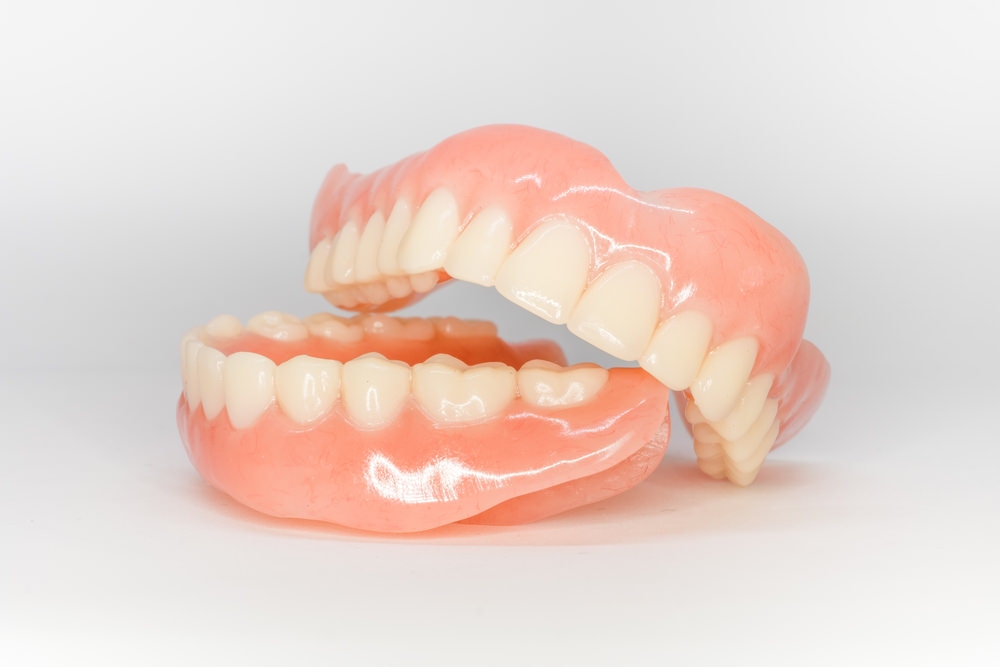
A set of Dentures – You can’t compare these to Dental Bridges
What Are the Ongoing Maintenance Costs for Getting a Bridge
The ongoing maintenance costs for a bridge is nothing more than upkeeping your oral health – that is, going in for your regular six-monthly check-ups.
It actually becomes more important to make sure you attend these, as;
- Even though you have a bridge, you can still get decay.
- You can get food caught underneath your bridge if you are not taking care of them properly.
Your Dentist will also show you techniques that will help you look after your bridge at home.
These handy hints will prevent food from getting stuck, which causes decay. This includes regularly using products such as;
- A Waterpik – This useful appliance lets out a little gush of water, which flushes out debris stuck underneath your bridge.
- Super Floss – This is a piece of floss that you can thread through, and then pull under the bridge, where the missing tooth is.
- Piksters – These little brushes look like a bottle brush you use to clean your kitchen but are so small they fit between your teeth and your bridge.
Are There Different ‘Quality’ Bridges and Do They Last the Same?
There are many different metals that you can use for a bridge, such as;
- Semi-Precious
- Non-Precious
- Gold
- Porcelain
- Zirconia – This is a fairly new material, and it is high in both quality and strength.
- Porcelain fused to Metal – This is was the first material used for a bridge and is still the most common.
Though these materials will all cost different amounts, they should all last the same amount of time.
However, the length of time greatly depends upon how well you take care of your bridge.
On average, a bridge will last 8 – 10 years. Though, we have seen cases of bridges lasting up to 25 years.
Can You Get a Dental Bridge Overseas?
Many people choose to get their bridges fitted overseas, as they find it is cheaper than using an Australian Dentist.
This is particularly the case for a Maryland bridge.
However, though it may be a cheaper choice, it is not always the safest choice.
It is well-known that overseas Dentists do not stick to the same strict standards that we have in Australia.
For your safety, our Dentists must adhere to regulation that is set by the Australian Dental Association (ADA).
Feel free to read our article for the pros and cons of choosing to have your dental work performed overseas and other options for Cheap dentistry.
What Are the Pitfalls to Look Out For?
There is one thing that can go wrong when you get a bridge – there is a chance that you can get decay under the bridge.
If you are not seeing your Dentist regularly, for your six-monthly check-ups, they will not be able to pick-up on this decay.
As a result, what may happen is that your bridge will break. Just like a tooth breaks under force, it will just fracture right off your teeth.
Depending on where the break is – if it is at the back of your mouth or the front of your mouth – will affect what happens next.
That is, whether your dentist is able to restore the bridge or you have to redo the whole bridge again.
For example, if it is at the back of your mouth, this is not too bad. The Dentist will be able to polish it off, and their job is done – you are free to go.
But if it is at the front of your mouth, this is not so good. You may have to undergo basically the entire process again, as the whole bridge gets redone.
This is why attending your regular check-ups is so highly important.
A check-up will give your Dentist the opportunity to see any changes in your bridge, and potentially save it from any fractures.
Conclusion
The cost of a dental bridge varies, depending on what teeth you are involving, and how many need to be filled in.
But you can expect to pay somewhere between $945 to $1367 per tooth, depending on your location, and even the metal you choose.
Take proper care of your bridge, and they will last you an average of 8 to 10 years – perhaps even as long as 25!
On the bright side also, it does not cost much to maintain a bridge – just be sure to stick to your regular check-ups to stop any potential pitfalls.
We hope that you have learnt a lot from this article – such as when bridges are important, and how to lower the cost if you do not have the funds available.
If you need more information, feel free to read our another recent blog of ours – The Definitive Guide to Dental Bridges.
By Anthony Cade
Created at October 30, 2020, Updated at May 08, 2025


